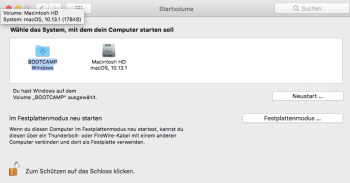I have installed Windows 10 on my Mac Pro 4.1 (upgraded to 5.1) in EFI mode, so that I have AHCI enabled.
Windows runs fine, but I have one problem:
I can boot into Windows when I press the ALT-key and select EFI boot, but when I try to boot into Windows with the startup disk selector, I get the error message "No bootable device -- insert boot disk and press any key".
So this is really annoying, because I upgraded to a new graphics card (so no boot screen) and now I cannot use the ALT-key method.
I thought I could navigate through the boot menu without seeing it, but that does not work. It seems that the boot menu only works when you have a Mac-graphics-card installed.
It would be nice when somebody can help me. I have already tried a PRAM and SMC reset.

Windows runs fine, but I have one problem:
I can boot into Windows when I press the ALT-key and select EFI boot, but when I try to boot into Windows with the startup disk selector, I get the error message "No bootable device -- insert boot disk and press any key".
So this is really annoying, because I upgraded to a new graphics card (so no boot screen) and now I cannot use the ALT-key method.
I thought I could navigate through the boot menu without seeing it, but that does not work. It seems that the boot menu only works when you have a Mac-graphics-card installed.
It would be nice when somebody can help me. I have already tried a PRAM and SMC reset.


